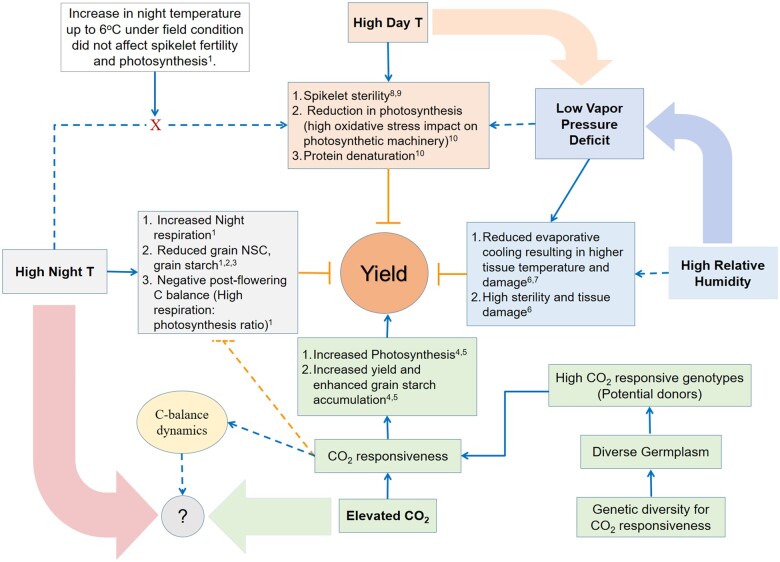Figure 1.
Schematic diagram illustrating key traits affected by HDT, HNT, RH, and e[CO2] and subsequently their impact on rice yield. A well-documented interaction of HDT and humidity (vapor pressure deficit) determines severity of day time temperature. On the other hand, HNT majorly affects night respiration and starch metabolism in the developing grains. Effect of e[CO2] provides additional substrate to photosynthesis and subsequently enhances assimilate production. Elevated [CO2] and HNT converse at C-balance dynamics due to (1) direct (positive) effect of e[CO2] on photosynthesis (C-gain) and carbohydrate metabolism and (2) direct (negative) effect of HNT on respiration (C-loss) and carbohydrate metabolism. Exploring and integrating genetic diversity for [CO2] responsiveness can help maintain a positive carbon balance and compensate stress-induced C loss. The blue solid arrows indicate direct effect, blue dotted arrows indicate plausible effect, orange solid arrows indicate direct negative effect, and orange dotted arrow indicate plausible negative effect on the physiological processes (traits). “?” indicates current research gap. (C, carbon; T, temperature; NSC, nonstructural carbohydrate; References: 1Bahuguna et al., 2017; 2Shi et al., 2017; 3Shi et al., 2013; 4Chaturvedi et al., 2017; 5Leakey et al., 2009; 6Bahuguna et al., 2015; 7Sadok and Jagadish, 2020; 8Jagadish et al., 2007; 9Jagadish et al., 2010; 10Mittler et al., 2012).

